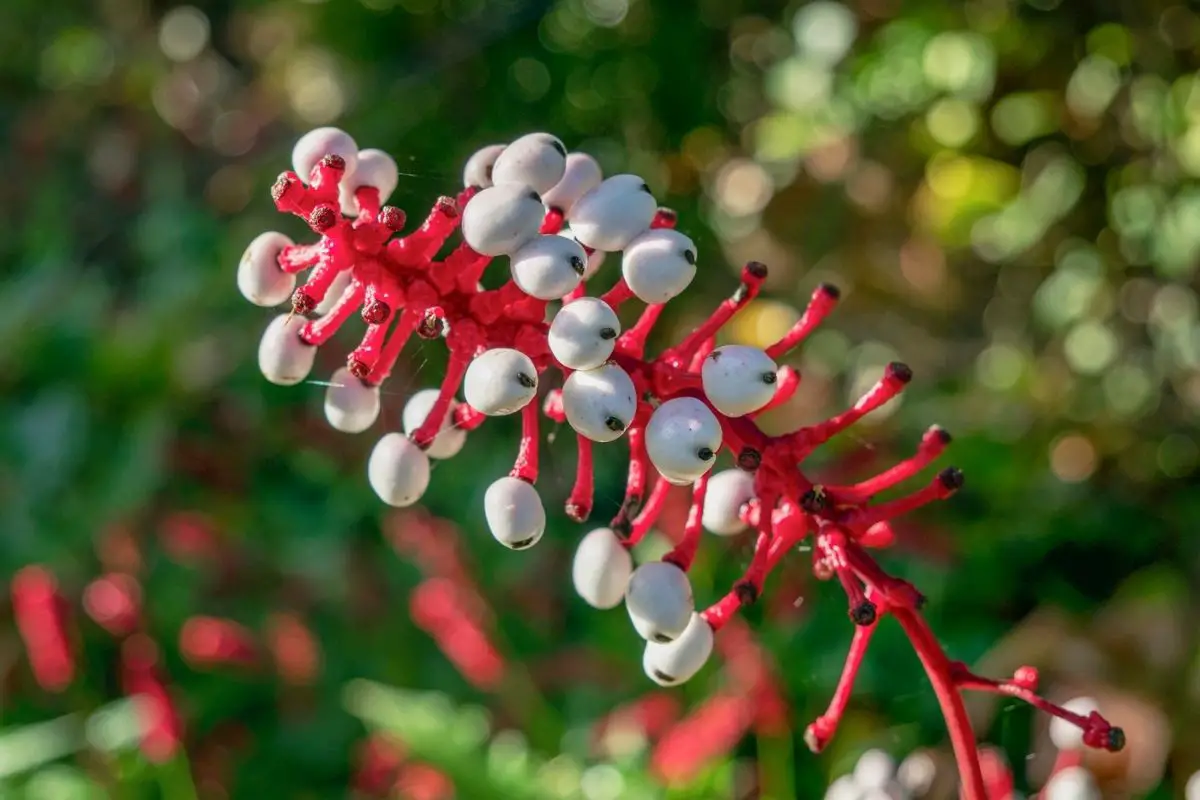The baneberry is a genus of flowering plants with around 25 recognized species. Native to Europe, Asia, and North America, this is a perennial plant that commonly grows in the wild.
This perennial is a member of the buttercup family and has extremely poisonous fruit.
Plant Facts
| Scientific name | Actaea rubra Actaea pachypoda Actaea racemosa |
| Common names | Red baneberry, China berry White baneberry, Dolll’s eyes Black baneberry |
| Genus | Actaea |
| Family | Ranunculaceae |
| Height | 2 feet (0.61 m) |
| Width | 1 foot (0.3 m) |
| USDA Plant Hardiness Zone | USDA Zones3 to 8 |
| Native to | Europe, Asia, North America |
| Blooming season | spring |
| Flower colors | white |
| Plant specific features | Brilliant red, white or black fruits from mid to late summer |
How to Plant and Grow Actaea Bushes
Where to Plant
In its natural environment, the baneberry grows in cool, shady locations. The plant does best if planted in full shade, but if it is in a cooler, moist location, it will tolerate partial shade too.
Due to the toxicity of the berries, this plant should never be planted where children or dogs could ingest the fruit.
This is a plant that should be planted in a sheltered location, away from cold winds.
This is a plant that has graceful and fluffy flower spikes. It will add architectural interest and texture to a mixed herbaceous border and is a useful addition for a shady area.
When to Plant
If planting from seed, then you can sow outdoors in the autumn. It will be two years before flowers are produced.
Alternatively, germinate the seeds indoors in the late winter. The soil must be kept moist until germination takes place.
If you are planting small plants, then the spring is the best time. Pre-potted plants are easier to establish than bare-rooted ones.
If the plants are small, then you will have to wait a couple of years until the plants are mature enough to flower.
Actaea Shrub Care and Maintenance
Soil
Actaea prefers humus-rich soil. The growing medium needs to be moisture-retaining, but equally important is that it is well drained.
Water
During the first year’s growth, the plant should not be allowed to dry out. Subsequently, this is a trouble-free and easy-to-care-for plant.
Fertilizer
If you have added organic matter such as leaf mold or compost to the soil at planting, then no additional fertilizer is required. Renew the application annually.
Sunlight
This is a shade-loving plant. If it is planted in full shade, it is likely to naturalize and spread, whereas if it is planted in bright sun, the plant will not grow so large.
Pruning and Repotting
There is no need to prune this plant. After flowering or once the berries have fallen, you can cut them back. This will encourage the plant to produce new growth and a more bushy habit.
Propagating
The division is the most effective method to use to propagate Actaea plants. Best done in the spring or autumn, you can easily turn one plant into several. Dividing the root clump in this way will also benefit the mother plant.
Sometimes the baneberry will self-seed. However, it isn’t an invasive plant and won’t spread aggressively.
Pests and diseases
Generally, pest and disease free, this is an easy plant to grow.
Temperature and Humidity
Since naturally, this is a plant that grows wild in cooler climates, it grows best in USDA zones 3 to 8. This plant exhibits adaptability and can flourish in diverse temperature and humidity conditions.
Other Uses for Actaea
The main risk of this plant is that almost all its parts are poisonous – including the leaves, flowers, and berries. The brightly colored berries are particularly toxic and dangerous if ingested by humans and mammals.
They can even lead to death. Birds however are unaffected by its toxic properties. Most animals ignore the berries, so they stay on the plant for a long time.
Types of Baneberry You Can Grow
The main types of baneberry are the red, white, or black varieties. Each of these varieties is poisonous.
Conclusion
This perennial is slow-growing and won’t invade your garden. But the multi-seasonal interest it will provide makes it a good choice for an easy-to-care-for plant that can be incorporated into a mixed border.
*image by AngieC333/depositphotos

